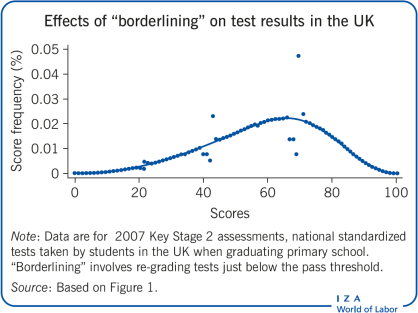Elevator pitch
Standardized testing has become the accepted means of measuring a school’s quality. However, the associated rise in test-based accountability creates incentives for schools, teachers, and students to manipulate test scores. Illicit behavior may also occur in institutional settings where performance standards are weak. These issues are important because inaccurate measurement of student achievement leads to poor or ineffective policy conclusions. The consequences of mismeasured student achievement for policy conclusions have been documented in many institutional contexts in Europe and North America, and guidelines can be devised for the future.

Key findings
Pros
Each investigation of test score manipulation must be done in context and requires qualitative indicators to assess the extent of the problem.
Simple indicators can often characterize the nature of the test score manipulation.
Controlled retesting of students, grading from independent markers, or random assignment of external monitors on the test day should be part of any testing protocol.
Cons
Testing manipulation is a pervasive problem that may follow from accountability pressures, ineffective implementation of testing protocols, or student cheating.
Manipulation of test results distorts student performance indicators leading to misleading evaluations of the effectiveness of teachers and school programs.
The manipulation of test results is intentional; as such, performance indicators obtained by dropping corrupted data are not reliable.